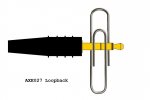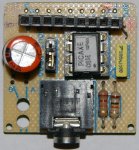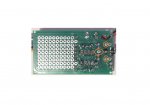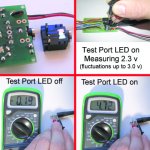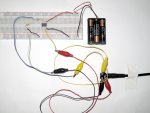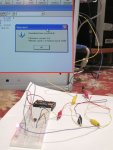Nativecorn
New Member
Hi,
Just getting started with the Picaxe and am getting a 'Hardware not found' error. I'm using a AXE027 USB cable. I installed the driver and the Programming Editor shows it as 'Ready to Use' on the Serial Port tab. I'm on a PC running 64 bit Vista Service Pack 2.
When using Programming Editor's 'Test Port' option the voltage is not steady but floats from -.2 to .3 Volts without the LED lit and with the LED lit the voltage holds a steady 2.30 Volts. (Measured across the Serial In and 0V pins.)
I've tried the Hard-Reset by disconnecting power, hitting 'Program', and then reconnecting power as the program tries to connect to the hardware. Still won't work.
To check my connections: I checked for continuity for the Serial Out and Ground Connections between the top of the micro-chip legs and the appropriate bare metal on the top of the download socket. And I measured 22kohms from the top of the Serial In leg (2) and the download socket (and from the 'Serial In' connection on top of the download socket to the ground measures 9.8 kohms. Also, I'm using 3 AA alkaline batteries for power and my multimeter reads 4.67 volts across the +V and 0V legs on the 8M2.
I built the circuit with another 8M2 chip and all different components on a breadboard and got the same results.
So, I'm stumped. Any help is greatly appreciated.
Thanks,
Scott
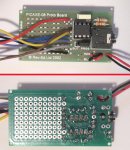
Just getting started with the Picaxe and am getting a 'Hardware not found' error. I'm using a AXE027 USB cable. I installed the driver and the Programming Editor shows it as 'Ready to Use' on the Serial Port tab. I'm on a PC running 64 bit Vista Service Pack 2.
When using Programming Editor's 'Test Port' option the voltage is not steady but floats from -.2 to .3 Volts without the LED lit and with the LED lit the voltage holds a steady 2.30 Volts. (Measured across the Serial In and 0V pins.)
I've tried the Hard-Reset by disconnecting power, hitting 'Program', and then reconnecting power as the program tries to connect to the hardware. Still won't work.
To check my connections: I checked for continuity for the Serial Out and Ground Connections between the top of the micro-chip legs and the appropriate bare metal on the top of the download socket. And I measured 22kohms from the top of the Serial In leg (2) and the download socket (and from the 'Serial In' connection on top of the download socket to the ground measures 9.8 kohms. Also, I'm using 3 AA alkaline batteries for power and my multimeter reads 4.67 volts across the +V and 0V legs on the 8M2.
I built the circuit with another 8M2 chip and all different components on a breadboard and got the same results.
So, I'm stumped. Any help is greatly appreciated.
Thanks,
Scott

Last edited by a moderator:

